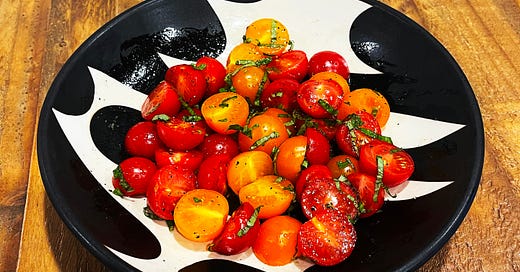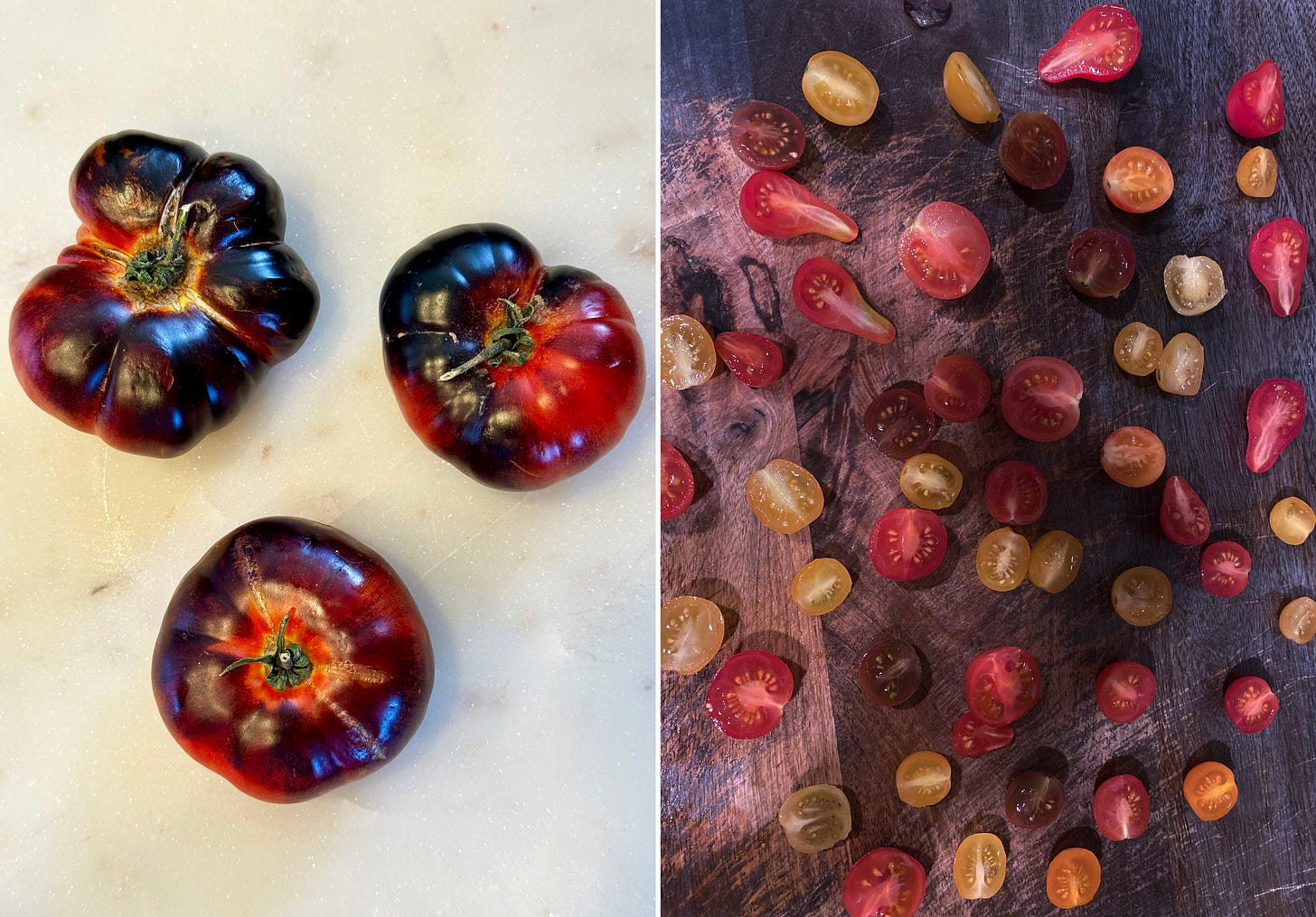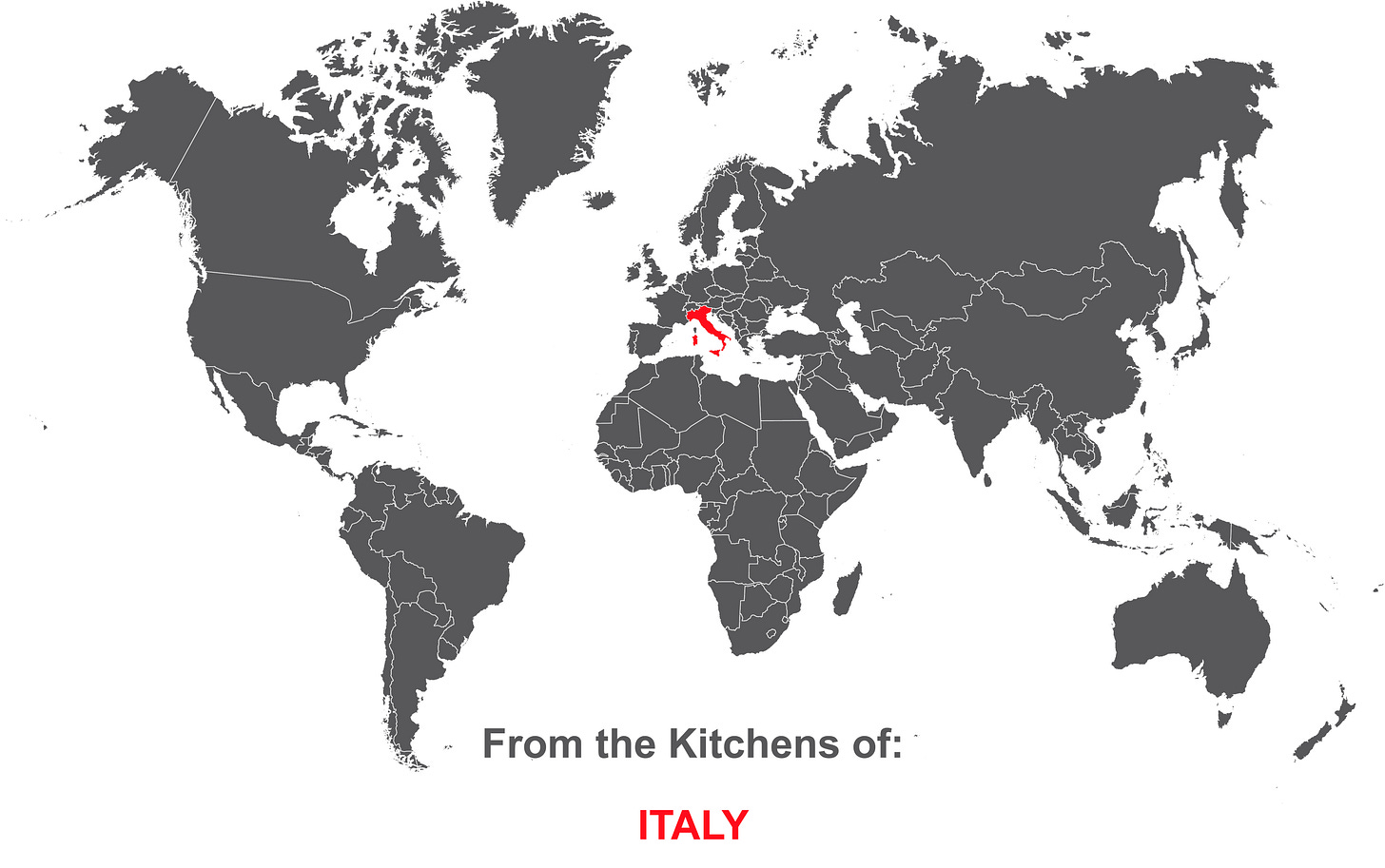The feeling of summer
Growing up, I obsessed over tomato—but not in the right way. If I saw even a sliver in my food, it had to go. I’d make a little pile on the side of my plate, picking tomato out of salads and sandwiches, not even sparing curries. It ran in my genes. My father was the same: we both loved the flavor of tomato, just not the texture. The fuss was unwittingly reinforced by my mom, who puréed the tomatoes before adding them to gravies and curries. By my teens, I was specifying “no tomatoes” when ordering sandwiches or burgers. If the menu didn’t allow for substitutions, I’d pull the slice of tomato out before the first bite.
“Don't you eat tomatoes?” my aunt asked, slightly annoyed, as I lifted the top bun of my crab burger.
“No,” I replied.
The trend continued into my 20s. Then came three turning points: none dramatic, but each quietly significant.
First, my husband and I moved to Seattle when I was 33. For the first time since moving to the U.S. from Bombay nearly a decade earlier, I was buying produce at a market. A real market. Not a grocery store or a weekend farmer's market, but a permanent one, selling local produce, meat and seafood: the storied Pike Place Market. There are many summer produce highlights here: peaches, nectarines, honeydew melons, Rainier cherries, plums, figs, and heavenly berries of all kinds—to name just a few. But the tomato rules over them all. It is the unmissable pride of the produce vendors. Displayed beautifully, often sliced open to reveal their vibrant flesh, and flanked by placards that read “Tastes like candy,” “Best in the Market,” and “Grown in dirt,” the tomatoes are a sight to behold, with each vendor trying to outdo the next. What theater!
Second, a trip to Rome and the Amalfi Coast. And then more Italy. Italians and their pomodoro—enough said. The obsession is eternal, and this time, I shared their religion. You can’t ignore that kind of reverence.
Third, during one of our routine summer visits to Pike Place, my son—six years old at the time—asked, “Mom, should we buy these candy tomatoes? Don’t they look good? Aren't tomatoes good for you?”
Yes, yes, and yes.
Discover the full range of stories and recipes in the Culinary Index, and explore lesser-known ingredients in the Ingredient Spotlights—both now featured on Savor the Story homepage.
From there, tomato salad quickly found its way onto our dinner table. A minimal, barely dressed, salad during the peak of summer to let the tomatoes take center stage (like in the recipe below), and more varied as the season waned: Caprese, panzanella, sometimes with grilled artichokes, or tomatoes paired with roasted eggplant. Not to mention the abundance of tomato varieties available, spanning a range of colors, textures and sweetness—all of which add entirely new flavor profiles to the salad.
The more we ate, the more we looked forward to it. Better late than never!
COOKING NOTES
On Chiffonading Basil: Cut the basil in chiffonades (as shown here), just before you are ready to add it to the bowl, using a sharp knife. This keeps the basil from oxidizing.
On Aceto Balsamico Tradizionale: It can be found in Italian or other specialty food stores. Make sure that the label includes “tradizionale.” When aged for at least 12 years, the bottle will have an ivory neck band, while a gold neck band is used to indicate a minimum of 25 years of aging. The latter will also be labeled “Extravecchio.”
VARIATIONS
Spring Tomato Salad: For a springtime lift, replace the balsamico tradizionale with some thinly sliced green garlic.
Moroccan Tomato Salad: For a Moroccan twist, skip the balsamico tradizionale, swap the basil for a mix of parsley and cilantro, and add some finely sliced red onion and ground cumin (about ½ teaspoon per pound of cherry tomatoes). This version pairs beautifully with grilled meats and fish.







